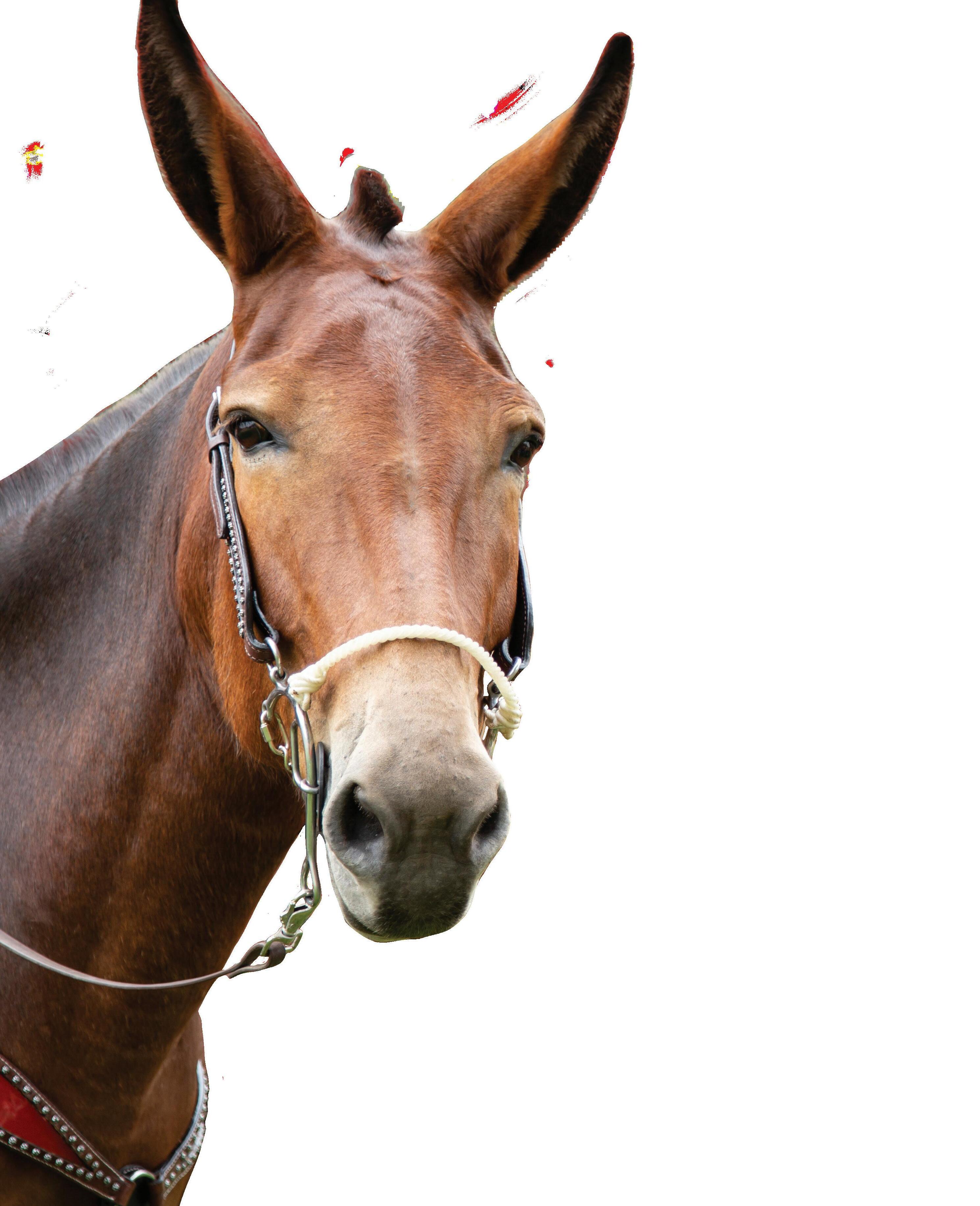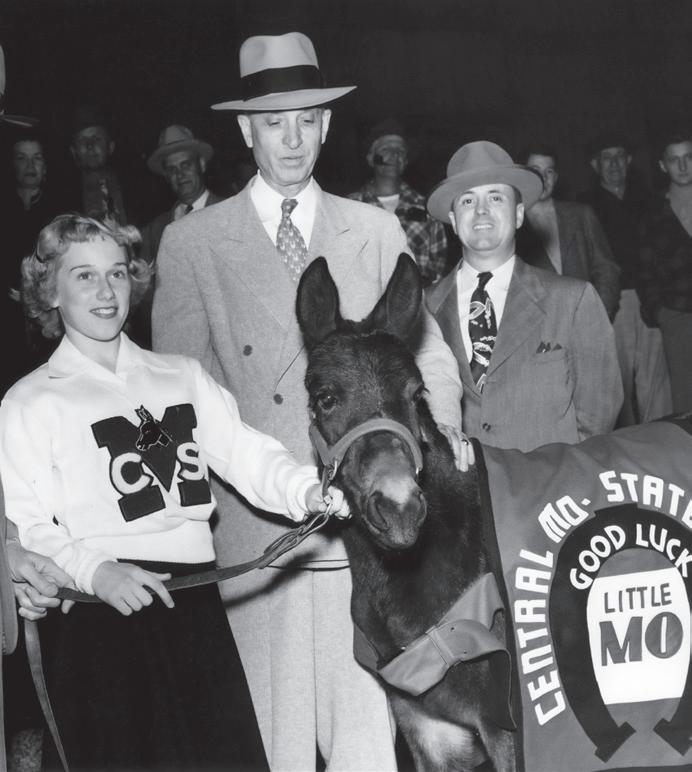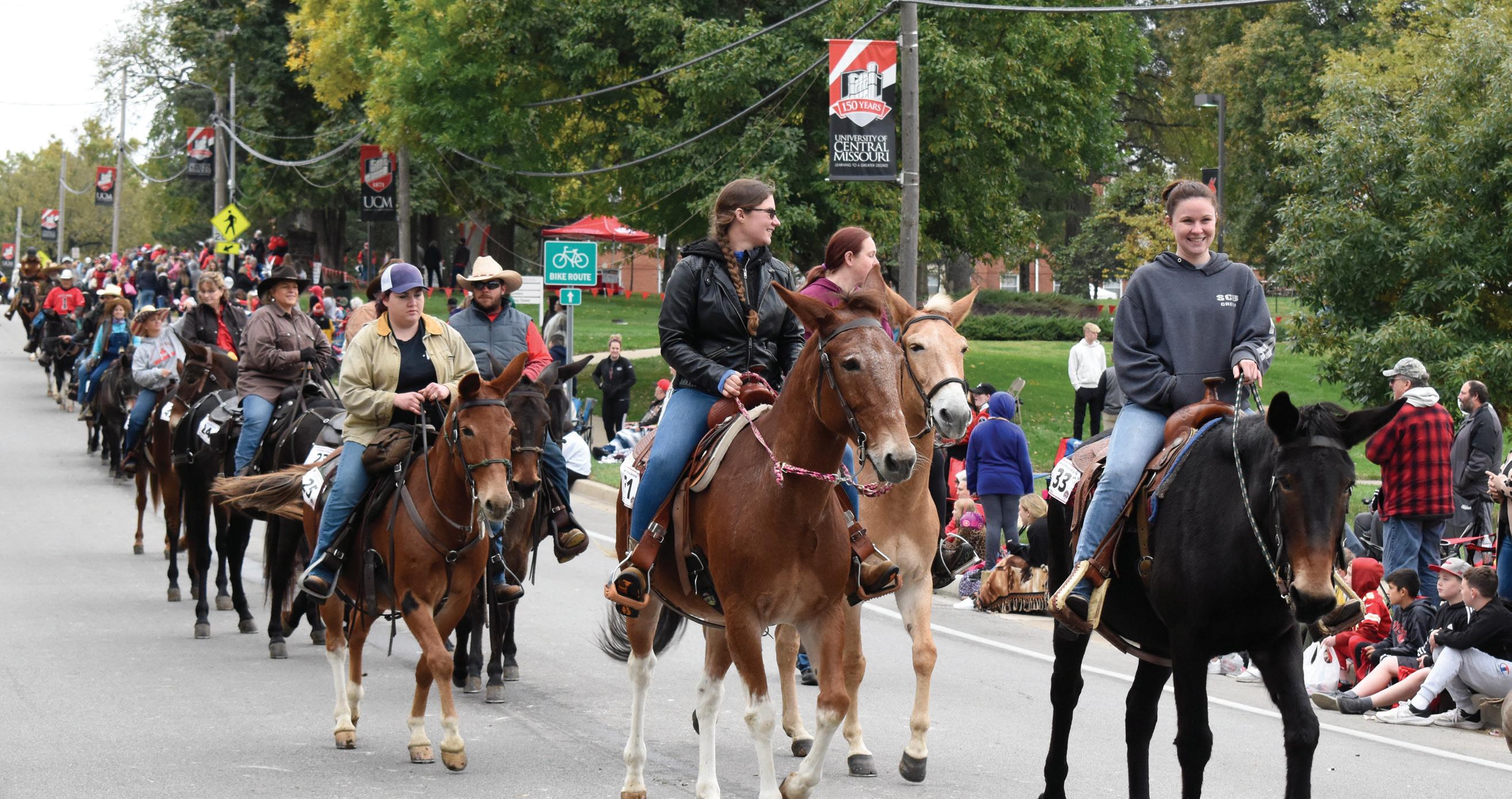FOREVER A MULE



For over a hundred years, the mule has been the university’s mascot. Students and alumni inherently take pride in being Mules and Jennies, and there’s much to discover about the university’s connection to Missouri’s state animal.
BECOMING A MULE
When the institution’s name changed from State Normal School No. 2 to Central Missouri State Teachers College in 1919, the former name of “Normals” no longer represented the students and the school. Encouraging students to participate in the mascot search, the Athletic Committee held a “name the team” contest during the 1921–22 school year.
More than 80 entries were submitted, including skunk, bobcat and hippopotamus. The winning suggestion came from John Thomason, ’24, of Chilhowee, who felt that at least one Missouri team should be known as the “Mules” because of the animal’s importance to the state’s economy. The mascot was officially announced in February 1922.
Athletic teams were represented as “Mules” for more than 50 years, and by the early 1970s, women student-athletes wanted their own distinct identity. In a competition similar to the one held five

decades earlier, the women’s teams were named the “Jennies” in February 1974. Cynthia Almaguer, ’74, of Knob Noster claimed the $50 prize when her suggestion was chosen from 34 entries.

MISSOURI MULES
The University of Central Missouri now welcomes students representing 47 states and 36 countries, but when the institution was established as a teaching college, it was designated to serve a majority of the counties south of the Missouri River. That same area was responsible for the production of a great number of the mules for which the state would become well known.

When Walter and Perry Jones founded the Jones Brothers Mule Barn in 1912, Missouri had 333,000 mules on record. The building that once housed these mules still stands as part of Warrensburg history, and you can see the motto
“Through These Portals Passed the Meanest Mules on Earth” displayed on the doors more than a hundred years later.

Mules have been an integral part of Missouri’s history. They have plowed land, harvested timber, drained swamps, worked mines and built roads. After their introduction to the state in the 1820s, mules became popular with farmers and settlers because of their hardy nature. Missouri mules pulled pioneer wagons to the Wild West during the 19th century and traveled overseas to play a crucial role in moving troops and supplies in the trenches of World War I and again in World War II.
The reputation of “Missouri mules” gained popularity at the 1904 St. Louis World’s Fair. At that exposition a sixmule hitch belonging to W.A. Elgin of Platte County swept all the competition, and a mule from a Morgan County farm received the $10,000 Mayor’s Award. Newspaper accounts of this exhibition brought worldwide attention to the state’s mule breeders and helped ensure that the largest and finest animals would henceforth be known as “Missouri mules.”
The University of Central Missouri embraced the mule as its mascot 73 years before Gov. Mel Carnahan signed into law a bill making it Missouri’s official state animal on May 31, 1995.

LIVING TRADITION
Once you have set foot on campus you are forever a Mule, and there is no symbol that better evokes this sentiment than that of the mules lovingly cared for by UCM students at Prussing Farm.

The mule barn and 260-acre property were donated to the university by Natalie Prussing Halpin in 2002, a century after her grandfather, George Prussing, built the barn in 1902.
The Prussing family handpicked matching pairs of mules around 2 years of age and trained them as teams to haul, plow, plant, mow and harvest. Prussing Farm now operates as a hands-on learning environment for students at UCM.


The presence of these incredible animals — often referred to as living mascots — is a manifestation of what UCM stands for: academic excellence, service, tradition and pride. Throughout the university’s history, students and staff have raised many mules, with the first living mascot, a feisty miniature mule named Gizmo, joining campus after World War II. Little Mo took over in 1950, Roscoe came in 1960, and Abbedale joined the team in the late 1980s.
Abbedale was donated to CMSU by the late Sam Smiser, ’38, of San Marino, California, who owned the Smiser Mule Ranch in Newhall, California, and was known throughout the country for his expertise as a mule skinner, mule producer and promoter.
In 1972, at the same time the institution claimed the name of Central Missouri State University, the student newspaper also changed its name from The Student to the Muleskinner. The name, meaning a professional who drives or guides mules, was selected from a competition hosted by the newspaper staff.



One of the current living mascots is named Mancow, although you will often hear her called by her nickname, “Tammy.” Radio personality Erich “Mancow” Muller, ’88, gifted Mancow the Mule to the university at the Missouri State Fair in 2003.

UCM welcomed a new mule in fall 2019 with the debut of Molly, who walks side by side with Tammy.
The presence of the living mascots at UCM is one that connects students and alumni to the identity of campus. Many alumni recall seeing UCM mules throughout the years — walking in the Homecoming parades, standing on the sidelines of the football games at Audrey J. Walton Stadium at Vernon Kennedy Field, attending Get the Red Out and more.



